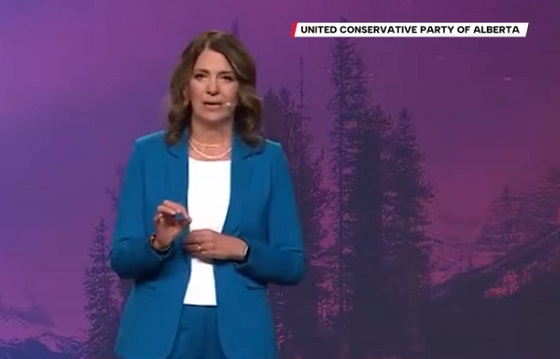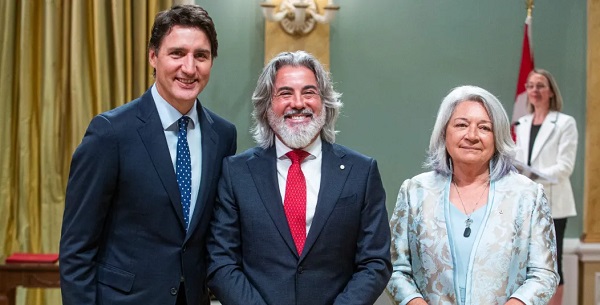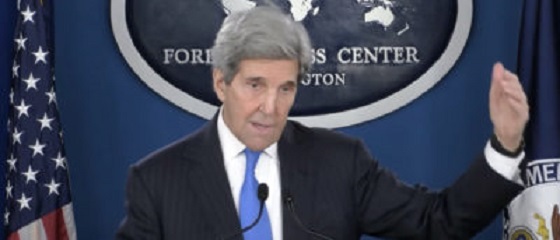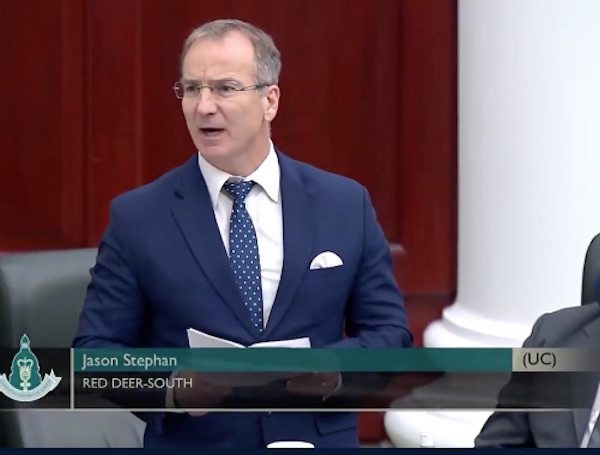Alberta
Premier Kenney announces Residential Recovery Centre, a critical addition in fight against opioid addictions

From the Province of Alberta
Building a recovery community in Red Deer
Alberta’s government is providing up to $5 million to build a recovery community in Red Deer, which will add 75 treatment beds in central Alberta.
As part of Alberta’s Recovery Plan, $25 million will support the construction of life-changing recovery communities, which will play a critical role in supporting the health, wellness and long-term recovery of Albertans.
“Today’s announcement is a big step towards supporting Albertans in their goal of recovery. We dedicated a portion of our Recovery Plan to ensure infrastructure was being dedicated to the vulnerable people in our communities. These recovery communities are a continuation of our efforts at creating 4,000 addiction treatment spaces in the province and building a full continuum of care for people struggling with addiction.”
Recovery communities, also known as therapeutic communities, are a form of long-term residential treatment for addiction, used in more than 65 countries around the world. Recovery is seen as a gradual, ongoing process of cognitive change through clinical and peer interventions. Program participants advance through the stages of treatment at their own pace, setting personal objectives and assuming greater responsibilities in the community along the way.
“I am excited to announce the first of five recovery communities will be in Red Deer. This is an important step in the expansion of our mental health and addiction recovery strategy. I want to thank the City of Red Deer for their tremendous partnership on this important project. Their commitment to the community and the people struggling with addiction has been second to none.”
Recovery Communities encourage participants to examine their personal behaviour to help them become more pro-social and positively engaged citizens – considered to be based on honesty, taking responsibility, hard work, and willingness to learn. The goal is for a participant to leave the program not only drug-free but also employed or in school or training.
Five recovery communities are being built across the Alberta. It is anticipated recovery communities will begin accepting participants in spring 2021.
“The City of Red Deer is proud to have worked closely with the Government of Alberta on this important initiative. Our friends, family, and neighbours suffering from addiction will have a place to go that’s close to home. We will continue to working with this government hand-in-hand as we build out further supports for the people of Red Deer.”
“I am pleased to hear that a recovery community is coming to Red Deer. This facility is poised to have a dramatic impact on those struggling with addiction in Red Deer and in central Alberta. I look forward to seeing the positive effects it has on its patients and the community as a whole.”
“Addiction is a challenge of human nature. Success in this complex matter must begin with the end in mind: supporting and loving our neighbors to become free from addictions. The announced therapeutic community for Red Deer is an innovative, game changing, service towards loving and supporting our neighbors seeking to become free from addictions, blessing families and communities throughout Central Alberta.”
This historic infrastructure investment complements government’s ongoing commitment to create 4,000 addiction and mental health treatment spaces in the province.
Alberta’s Recovery Plan is a bold, ambitious long-term strategy to build, diversify, and create tens of thousands of jobs now. By building schools, roads and other core infrastructure we are benefitting our communities. By diversifying our economy and attracting investment with Canada’s most competitive tax environment, we are putting Alberta on a path for a generation of growth. Alberta came together to save lives by flattening the curve and now we must do the same to save livelihoods, grow and thrive.
Quick facts
- Alberta’s Recovery Plan provides a total of $25 million to build five recovery communities across the province, adding 400 treatment beds – a 30 per cent increase to current capacity.
- Construction of these long-term residential treatment centres is part of the more than $10 billion infrastructure spending announced as part of Alberta’s Recovery Plan. This spending includes: $6.9 billion Budget 2020 capital spending, $980 million accelerated for Capital Maintenance and Renewal, $200 million for Strategic Transportation Infrastructure Program and water infrastructure projects, $600 million in strategic infrastructure projects, $500 million in municipal infrastructure and $1.5 billion for Keystone XL.
Alberta
New era of police accountability

The Police Review Commission (PRC) is now fully operational, giving Albertans a single, independent process to file policing complaints and ensure accountability.
Alberta’s government is putting the province at the forefront of police oversight in Canada with the creation of the PRC. This new commission replaces the current patchwork of police investigating police with one independent body responsible for receiving complaints, conducting investigations and overseeing disciplinary hearings. By centralizing these functions within a single, independent agency, Alberta is ensuring complaints are handled fairly and consistently.
“The Police Review Commission represents a new era in how Alberta addresses policing complaints. These changes are part of a broader paradigm shift where police are no longer seen as an arm of the state, but rather an extension and a reflection of the community they serve. As an independent agency, it is committed to fairness, accountability and public trust, ensuring every complaint is investigated impartially and resolved openly.”
The Police Amendment Act, 2022 laid the groundwork for this new model, establishing a modern approach to oversight built on accountability, consistency and public confidence. The PRC will manage the full complaints process from receiving and assessing, to investigating and resolving complaints related to police conduct, including serious incidents and statutory offences.
“The Alberta Association of Chiefs of Police welcomes the launch of the Police Review Commission as a meaningful step toward enhanced oversight and greater transparency in policing. By ensuring complaints are reviewed fairly and impartially, the Commission will help strengthen accountability and reinforce public trust in Alberta’s police agencies. Police leaders across the province are committed to working with the Commission and our communities to ensure every Albertan has confidence in the integrity of our police services.”
A timely and transparent complaint resolution process is essential for both the public and police. That is why the PRC must complete investigations within 180 days, and if more time is needed, the chief executive officer must publicly report on delays and provide justification. This ensures clarity, predictability and accountability throughout the process. The commission will be arm’s length from government and police services, meaning people can have greater confidence that their complaints will be investigated and resolved impartially.
“Our goal is to build trust in policing by delivering timely resolutions and fair, consistent outcomes that put people first. Every complaint will be reviewed thoroughly and handled with the transparency and respect Albertans expect and deserve.”
The PRC can also initiate systemic reviews related to police conduct or emerging trends without the need for a public complaint, and these reviews must be made public. Together, these measures create a clear, accountable process that strengthens transparency, supports continuous improvement and enhances trust in how police oversight is carried out across Alberta.
“Public safety and the confidence the public has in our police services and service members are incumbent for effective and responsible service delivery. The PRC has been developed so that Albertans may have a responsible and impartial mechanism to voice concerns regarding delivery of policing services in Alberta. I am confident that the PRC will be an inclusive and diverse representation of the communities, so we may better understand the most appropriate and effective way to respond to concerns regarding police services. I look forward to the positive outcomes for the community.”
The commission’s design was informed by engagement with Indigenous communities, law enforcement partners, municipal officials and community organizations, ensuring its structure and training reflect Alberta’s diversity and values.
Quick facts
- The PRC will handle complaints in three categories:
- Level 1: Death, serious injury and serious or sensitive allegations involving all police services in Alberta, as well as peace officer agencies.
- Level 2: Allegations of criminal and other statutory offences involving all police services in Alberta.
- Level 3: Complaints about non-criminal misconduct involving officers employed by municipal and First Nations police services.
- Complaints that fall outside the three categories will be referred to the appropriate bodies or agencies for review.
- The Alberta Serious Incident Response Team (ASIRT) will now operate under the PRC.
Alberta
Keynote address of Premier Danielle Smith at 2025 UCP AGM

-

 Agriculture2 days ago
Agriculture2 days agoHealth Canada pauses plan to sell unlabeled cloned meat
-

 Artificial Intelligence1 day ago
Artificial Intelligence1 day agoGoogle denies scanning users’ email and attachments with its AI software
-

 Health1 day ago
Health1 day agoOrgan donation industry’s redefinitions of death threaten living people
-

 Alberta2 days ago
Alberta2 days agoCarney forces Alberta to pay a steep price for the West Coast Pipeline MOU
-

 National2 days ago
National2 days agoAlleged Liberal vote-buying scandal lays bare election vulnerabilities Canada refuses to fix
-

 Daily Caller2 days ago
Daily Caller2 days agoJohn Kerry Lurches Back Onto Global Stage For One Final Gasp
-

 COVID-191 day ago
COVID-191 day agoFDA says COVID shots ‘killed’ at least 10 children, promises new vaccine safeguards
-

 Alberta1 day ago
Alberta1 day agoNet Zero goal is a fundamental flaw in the Ottawa-Alberta MOU






